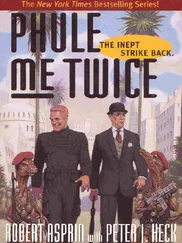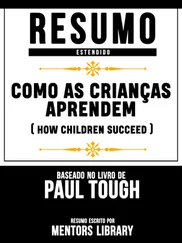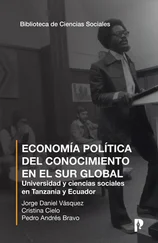data covering about two hundred thousand students: David Leonhardt, “Colleges Are Failing in Graduation Rates,” New York Times, September 9, 2009.
Americans’ natural tendency toward “educational romanticism”: Charles Murray, Real Education: Four Simple Truths for Bringing America’s Schools Back to Reality (New York: Crown Forum, 2008), 11.
“a fog of wishful thinking”: Ibid., 12.
students who had those same lofty academic credentials: Bowen, Chingos, and McPherson, Finish Line, 104, 110.
the most accurate predictor of whether a student: Ibid., 113.
he explains that the SAT was invented: Nicholas Lemann, The Big Test: The Secret History of the American Meritocracy (New York: Farrar, Straus and Giroux, 2000).
high-school grades turned out to be excellent predictors: Bowen, Chingos, and McPherson, Finish Line, 122.
“Students with very good high school grades”: Ibid.
And when Angela Duckworth: Angela Duckworth, Patrick Quinn, and Eli Tsukayama, “What No Child Left Behind Leaves Behind: The Roles of IQ and Self-Control in Predicting Standardized Achievement Test Scores and Report Card Grades,” Journal of Educational Psychology, in press, 2011.
“high school grades reveal much more”: Bowen, Chingos, and McPherson, Finish Line, 123.
Alex Kotlowitz’s book: Alex Kotlowitz, There Are No Children Here: The Story of Two Boys Growing Up in the Other America (New York: Anchor Books, 1991).
contrasting the “superfluity of opportunity”: Jonathan Kozol, Savage Inequalities: Children in America’s Schools (New York: Crown Publishers, 1991), 67.
“shunned—or, probably, shut down”: Ibid., 68.
read a front-page story: Jodi S. Cohen and Darnell Little, “Of 100 Chicago Public School Freshmen, Six Will Get a College Degree,” Chicago Tribune, April 21, 2006. After the Tribune article came out, the consortium report was updated and corrected to show that eight of every one hundred Chicago high-school freshmen would earn a college degree, not six of every one hundred.
just eight of every one hundred students: Melissa Roderick, Jenny Nagaoka, and Elaine M. Allensworth, From High School to the Future (Chicago: Consortium on Chicago Schools Research, 2006).
fewer than one in thirty black male: Cohen and Little, “Of 100 Chicago Public School Freshmen, Six Will Get a College Degree”; Roderick, Nagaoka, and Allensworth, From High School to the Future; e-mail communication with Emily Krone of the Consortium on Chicago Schools Research. The Tribune story showed that the odds were one in forty; that figure changed when the report was updated.
“study skills, work habits, time management”: Melissa Roderick, Closing the Aspirations-Attainment Gap: Implications for High School Reform (New York: MDRC, April 2006), 25.
“critical thinking and problem-solving abilities”: Ibid., 26.
“High school teachers could have very high workloads”: Ibid., 22–23.
the percentage of American tenth-graders: Ibid., 3.
“the worst slum area in the United States”: Pam Belluck, “Razing the Slums to Rescue the Residents,” New York Times, September 6, 1998.
one in nine murders in Chicago: William Julius Wilson, The Truly Disadvantaged (Chicago: University of Chicago Press, 1987), 25.
single mothers on welfare: Ibid.
The Chicago public schools’ average is 17: Rosalind Rossi, “CPS High School ACT Scores Go Down—and They Go Up,” Chicago Tribune, November 3, 2011.
only students who score in the top 20 percent: Murray, Real Education, 67, 75.
“As long as it remains taboo”: Ibid., 104.
“just not smart enough”: Ibid., 44.
Recently, two labor economists: Philip Babcock and Mindy Marks, “Leisure College, USA: The Decline in Student Study Time,” AEI Education Outlook (Washington, DC: American Enterprise Institute for Public Policy Research, August 2010); Philip Babcock and Mindy Marks, “The Falling Time Cost of College: Evidence from Half a Century of Time Use Data,” unpublished paper (March 24, 2010).
A separate study of 6,300 undergraduates: Steven Brint and Allison M. Cantwell, Undergraduate Time Use and Academic Outcomes: Results from UCUES 2006 (Berkeley, CA: Research and Occasional Paper Series, Center for Students in Higher Education, University of California, Berkeley, October 2008).
I wrote an article about KIPP and Riverdale: Paul Tough, “What If the Secret to Success Is Failure?,” New York Times Magazine, September 18, 2011.
“I’m left now, in my thirties”: See http://community.nytimes.com/comments/www.nytimes.com/2011/09/18/magazine/what-if-the-secret-to-success-is-failure.html?permid=141#comment141.
“one of the best decisions I ever made”: “‘You’ve Got to Find What You Love,’ Jobs Says,” Stanford Report, June 14, 2005.
There are fewer entrepreneurs: Paul Kedrosky and Dane Stangler, Financialization and Its Entrepreneurial Consequences (Kansas City, MO: Kauffman Foundation Research Series, March 2011).
36 percent of new Princeton graduates: Catherine Rampell, “Out of Harvard, and Into Finance,” New York Times Economix blog, December 21, 2011.
an insightful blog post addressing this issue: James Kwak, “Why Do Harvard Kids Head to Wall Street?,” Baseline Scenario blog, May 4, 2010, http://baselinescenario.com/2010/05/04/why-do-harvard-kids-head-to-wall-street/.
The recruiters also make the argument: Marina Keegan, “Another View: The Science and Strategy of College Recruiting,” New York Times DealBook blog, November 9, 2011.
an ongoing survey of attitudes by the Pew Research Center: “September 22–25, 2011, Omnibus,” Pew Research Center.
In 1966, at the height of the War on Poverty: Carmen DeNavas-Walt, Bernadette D. Proctor, and Jessica C. Smith, U.S. Census Bureau, Current Population Reports, Income, Poverty, and Health Insurance Coverage in the United States: 2010 (Washington, DC: U.S. Government Printing Office, 2011), 14, figure 4.
And the child poverty rate: “Poverty Among Children,” Congressional Budget Office, December 3, 1984; DeNavas-Walt, Proctor, and Smith, Income, Poverty, 17, figure 4.
The first goes back to The Bell Curve: Richard J. Herrnstein and Charles Murray, The Bell Curve: Intelligence and Class Structure in American Life (New York: Free Press, 1994). See also James J. Heckman, “Lessons from the Bell Curve,” Journal of Political Economy 103, no. 5 (1995).
gap between rich and poor was getting worse: Sean F. Reardon, “The Widening Achievement Gap Between the Rich and the Poor,” in Whither Opportunity?, eds. Greg Duncan and Richard Murnane (New York: Russell Sage, 2011). See also Sabrina Tavernise, “Education Gap Grows Between Rich and Poor, Studies Say,” New York Times, February 9, 2012.
The consensus of most reform advocates: Steven Brill chronicles the way that the broad education-reform movement became a narrowly focused teacher-quality movement in Steven Brill, Class Warfare: Inside the Fight to Fix America’s Schools (New York: Simon and Schuster, 2011).
This argument has its intellectual roots: William L. Sanders and June C. Rivers, Cumulative and Residual Effects of Teachers on Future Student Academic Achievement (Knoxville: University of Tennessee Value-Added Research and Assessment Center, November 1996); William L. Sanders and Sandra P. Horn, “Research Findings from the Tennessee Value-Added Assessment System (TVAAS) Database: Implications for Educational Evaluation and Research,” Journal of Personnel Evaluation in Education 12, no. 3 (1998); Heather R. Jordan, Robert L. Mendro, and Dash Weerasinghe, Teacher Effects on Longitudinal Student Achievement: A Report on Research in Progress (Dallas: Dallas Public Schools, July 1997); Kati Haycock, “Good Teaching Matters… a Lot,” Thinking K−16 3, no. 2 (Summer 1998); Eric A. Hanushek, John F. Kain, and Steven G. Rivkin, “Teachers, Schools, and Academic Achievement,” NBER Working Paper 6691 (Cambridge, MA: National Bureau of Economic Research, August 1998); Eric A. Hanushek, “Efficiency and Equity in Education,” NBER Reporter (Spring 2001); Robert Gordon, Thomas J. Kane, and Douglas O. Staiger, Identifying Effective Teachers Using Performance on the Job, Hamilton Project White Paper 2006-01 (Washington, DC: Brookings, 2006).
Читать дальше



![Коринн МакКей - How to Succeed as a Freelance Translator [calibre 3.46.0]](/books/402693/korinn-makkej-how-to-succeed-as-a-freelance-transl-thumb.webp)








